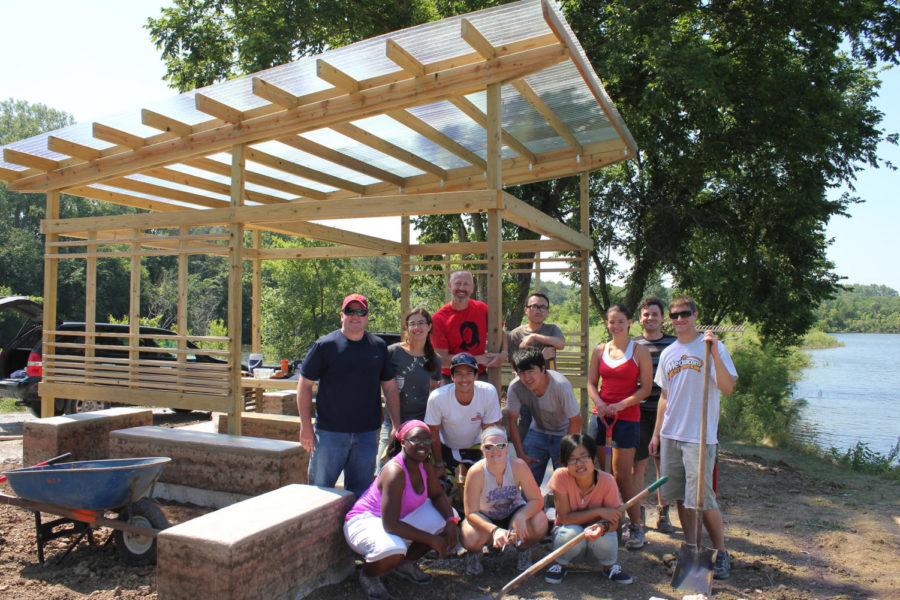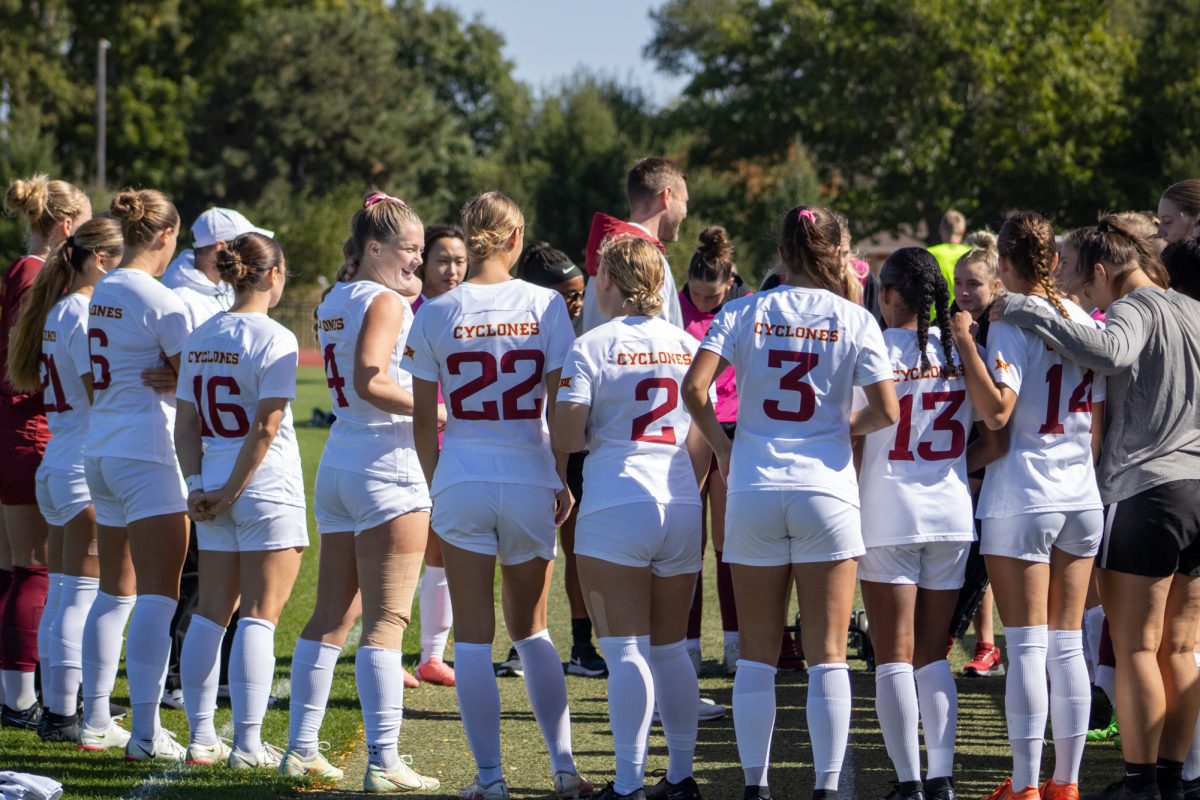New shelter at Peterson Park
Photo: Brian Achenbach/Iowa State Daily
PetersonPark.jpg
July 26, 2013
Guests at Peterson Park this summer will find a new shelter among the wilderness, contributed by an Iowa State architecture class.
ARCH 581 requires participating in a service learning project, which has a small yearly budget of $2,500 courtesy of the architecture department. Donations from the client and other resources are also accepted.
“Most times when you see a park shelter, it costs around $15,000 to $20,000. With only $2,500, we had a pretty tight budget,” said assistant professor Rob Whitehead.
Not only did the class face a tight budget, but it also faced a shorter amount of time than usual.
“The entire class was eight weeks long,” said architecture graduate student Michael Spory. “It took about two and a half weeks to design and plan the shelter, and another five weeks to build it.”
These factors did not deter the group of 13 graduate students from pressing forward to help their design reach fruition. In fact, this allowed the students to use other creative ways to get the job done.
While building the shelter, the group utilized a method very rarely seen in Iowa: The rammed earth process.
“The rammed earth process includes mixing a bunch of dirt and dry cement together, putting it in the correct form, and literally ramming it down until it becomes a layer,” Whitehead said. “You then repeat this process until you have multiple layers. The moisture inside the surrounding dirt then activates the cement.
“We have 10 rammed earth benches at the shelter, and they will be more stable with this method in place.”
In the end, the shelter consisted of three separate “rooms” within: One underneath it, and two on either side. Each section has earth rammed benches for fishing, eating, or just sitting around the fire pit.
Taking into account other factors such as the sun and wind, the shelter also helps block the sun and otherwise create a friendly environment for the park’s patrons.
This project has helped Story County Conservation consider attaining a permanent relationship with the architecture department, which could help students in the future contribute to their community while gaining hands-on experience for their future careers.







